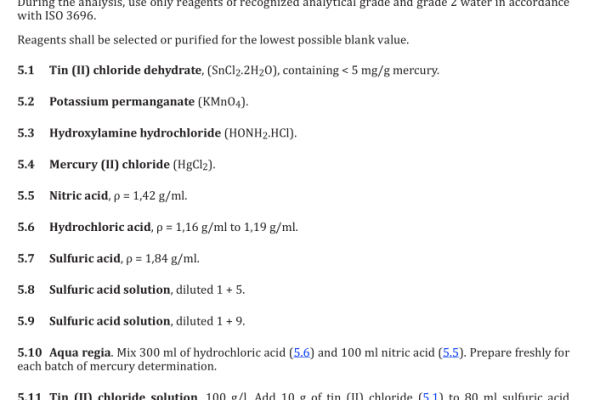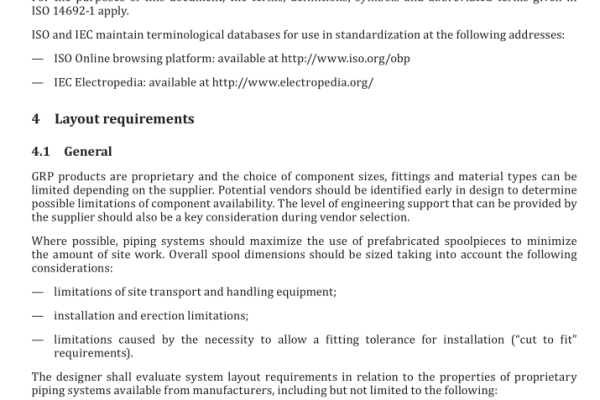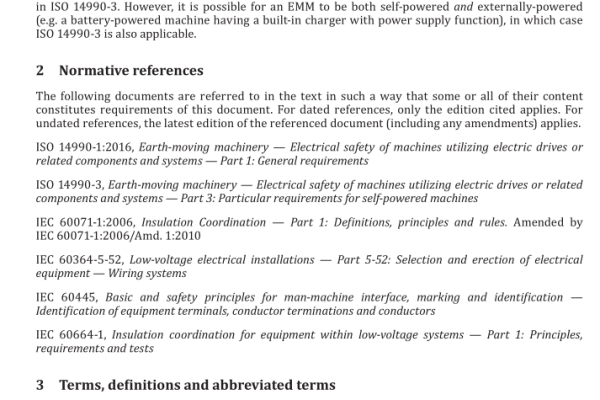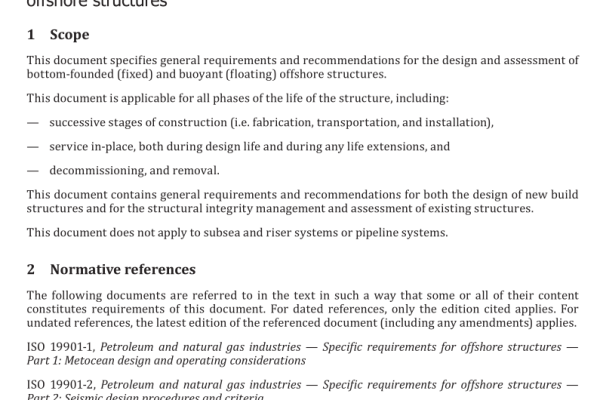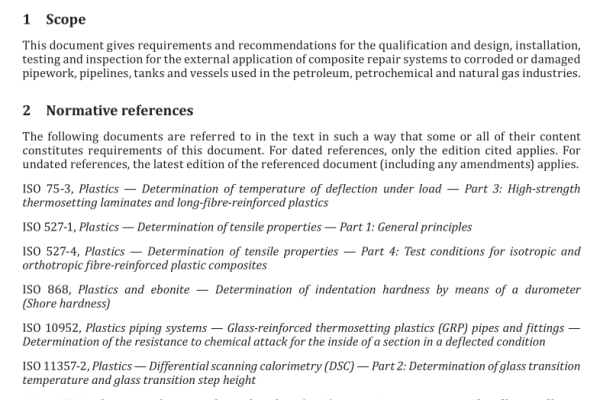AS ISO 24817:2022 pdf download Petroleum, petrochemical and natural gas industries — Composite repairs for pipework — Qualification and design, installation, testing and inspection
3.6
cure
curing
setting of a thermosetting resin system, such as polyester or epoxy, by an irreversible chemical reaction
3.7
cure schedule
time-temperature profile qualified to generate a specified T g or HDT
3.8
defect type A
defect within the substrate, not through-wall and not expected to become through-wall within the repair design lifetime of the repair system
3.9
defect type B
through-wall defect or a defect within the substrate where at the end of service life the remaining wall thickness is less than 1 mm
3.10
defined lifetime
actual application or service lifetime of the repair
3.11
delamination
area between the repair laminate and the substrate which should be bonded together but where no bond exists, or an area of separation between layers in the repair laminate
3.12
design lifetime
maximum application lifetime of the repair
3.13
differential scanning calorimetry
DSC
method of determining the glass transition temperature of a thermosetting resin
3.14
dry spot or un-impregnated/dry fibre
area of fibre not impregnated with resin, with bare, exposed fibre visible
3.15
engineered repair
repair which has been designed and applied under a specified, controlled process so that under the design conditions, there is a high degree of confidence that the repair will maintain its integrity over the design lifetime
3.16
exposed fibre
area of fibre not impregnated with resin that projects from the body of the repair
3.17
foreign matter
any substance other than the reinforcing fibre or other materials that form part of the repair system
3.18
finishing materials
final layer of material to help compact the repair laminate, typically a polymeric film or a fabric Note 1 to entry: They should be fully removed after the repair has hardened and before the repair is inspected or painted.
3.19
glass transition temperature
temperature at which a resin undergoes a marked change in physical properties
3.20
hardener
component added to a thermosetting resin to effect cure
3.21
heat distortion temperature
HDT
temperature at which a standard test bar deflects by a specified amount under a given load
3.22
installer
person who is qualified to apply a composite repair system
3.23
filler material
material used to repair external surface imperfections prior to the application of the composite laminate
3.24
laminate
repair laminate
part of a repair system that is the composite
Note 1 to entry: Most composites considered in this document are composed of discrete lamina or layers which are wrapped or stacked, one on top of the other. This stacked construction is the laminate.
3.25
layer
individual layer or wrap within the composite laminate
3.26
leak
condition of a substrate wall that can allow the contents to make contact with and act directly upon the (composite) repair laminate
Note 1 to entry: This does not refer to a fluid leaking through a hole or breach in the substrate.
3.27
occasional load
load that occurs rarely and during a short time
Note 1 to entry: Occasional loads typically occur less than 10 times in the life of the component and each load duration is less than 30 min.
3.28
owner
organization that owns or operates the substrate to be repaired
3.29
pin hole
pin-prick hole in the resin rich surface, not extending into the laminate
3.30
pipeline
pipe with components subject to the same design conditions used to transport fluids between plants
Note 1 to entry: Components include bends, flanges and valves.
AS ISO 24817:2022 pdf download

